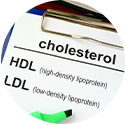Post-concussion syndrome (PCS) is a complex disorder in which various symptoms such as brain fog, headaches and dizziness continue for weeks, months, or even years after a concussion.
Among sports-related injuries, post-concussion syndrome is one of the most elusive and challenging problems to treat. While many patients will recover from their concussion, just as many will not. To make matters worse, as an athlete sustains repeat concussions, the chance of recovery becomes less likely. Symptoms of post-concussion syndrome vary from patient to patient but can include headache, difficulty in tracking objects, slower reaction times, anger, lightheadedness, anxiety, depression, blurred vision, difficulty in concentration, photophobia (intolerance to bright light), and phonophobia (intolerance to loud sounds). These symptoms can range in severity from being slightly annoying to becoming an overwhelming disability.
The difficulty in treating this disorder is explained by researchers who note in the journal Expert review of neurotherapeutics: “Persistent post-concussion syndrome caused by mild traumatic brain injury has become a major cause of morbidity and poor quality of life. Unlike the acute care of concussion, there is no consensus for treatment of chronic symptoms.
Moreover, most of the pharmacologic and non-pharmacologic treatments have failed to demonstrate significant efficacy on both the clinical symptoms as well as the pathophysiologic cascade responsible for the permanent brain injury.
A most promising new direction is the use of hyperbaric oxygen therapy, which targets the basic pathological processes responsible for post-concussion symptoms.”(1)
Hyperbaric oxygen therapy, HBOT, has been used for more than a quarter century to help expedite recovery from many conditions by increasing oxygen flow to body tissues.
This safe and efficient treatment, which involves placing a patient in a high-pressure, oxygen-rich environment, enables more oxygen to circulate through the lungs than does breathing regular air or even pure oxygen. It has been shown to promote healing, enhance the activity of infection-fighting white blood cells, increase antioxidant response and improve the growth of new blood vessels in areas with arterial blockage or reduced circulation.
Hyperbaric oxygen therapy can improve post concussion syndrome years after mild traumatic brain injury
Researchers have provided convincing evidence that hyperbaric oxygen therapy may be the coveted neurotherapeutic method for brain repair.(2) A 2015 study presented findings that hyperbaric oxygen therapy can repair chronically impaired brain functions and improved quality of life in traumatic brain injury patients with prolonged post-concussion syndrome at late chronic stage.(3)
In 2016 researchers took this one step farther and suggest traumatic brain injury and post-concussion syndrome patients undergoing hyperbaric therapy achieved significant improvement suggesting its utility as a standard intensive care regimen in traumatic brain injury.(4)
In September 2018, researchers publishing in the BMJ Open journal wrote of their findings: “In the largest published cohort of patients suffering from chronic deficits post-traumatic brain injury of all severities, hyperbaric oxygen therapy was associated with significant cognitive improvements. The clinical improvements were well correlated with increased activity in the relevant brain areas.”(5)
In 2019 (6) researchers offered evidence that military personnel suffering from dizziness and imbalance after mild traumatic brain injury may benefit from hyperbaric oxygen as the treatment may influence balance function after mild traumatic brain injury and be beneficial to with affective symptoms.
However, is it really a concussion?
Athletes and others reporting cognitive difficulties after a head injury are usually diagnosed as having had a concussion. But is it really a concussion? A recent study published by University at Buffalo medical faculty finds that many of the same symptoms are common to concussions and to injuries to the neck and/or balance system, known collectively as cervical/vestibular injuries.Or a neck injury.
The research was based on responses about symptoms from 128 patients – some of whom were professional athletes – who were being treated at University at Buffalo’s Concussion Management Clinic in the School of Medicine and Biomedical Sciences.(7)
If it is neck injury, can the relative quick recovery time in some be a neck injury treated correctly? Patients with sports related concussion typically recover within 10 days of injury. In some cases, however, symptoms may be prolonged or complications may develop.(8)
Post-concussion syndrome treatment – Prolotherapy
Here at the Magaziner Center for Wellness, we use hyperbaric oxygen to treat patients with concussions and post-concussion syndrome. This therapy is used to greatly increase oxygen uptake to the brain, nervous system, skeletal muscle, and all body tissues.
We also recommend a targeted supplement program to reduce oxidative stress and improve mitochondrial function, two areas that are often adversely affected with a brain injury or post-concussion syndrome in addition to Prolotherapy.
Another key treatment is the use of prolotherapy. We have an extremely high success rate treating PCS with prolotherapy.
In fact, many of the PCS patients who come to our facility have exhausted the realm of conventional medical treatment, after having been examined by neurologists, therapists, and surgeons, treated with antidepressants, anti-anxiety medication, pain medication and sleeping medication. They have been very pleased to finally get real relief from this insidious condition
Researchers have demonstrated that (9) that when the neck ligaments are injured, such as in the violent force or whiplash associated with concussion, they become loose which causes excessive movement of the cervical vertebrae. In the upper cervical spine, weak cervical ligaments can allow for hypermobility of the cervical vertabrae causing vertigo, tinnitus, dizziness, facial pain, and migraine headaches. Prolotherapy, the injection of destrose can repair and retore the ligament function and restore normal neck motion.
1. Hadanny A, Efrati S. Treatment of persistent post-concussion syndrome due to mild traumatic brain injury: current status and future directions. Expert Rev Neurother. 2016 Aug;16(8):875-87.
2. Boussi-Gross R, Golan H, Fishlev G, Bechor Y, Volkov O, Bergan J, Friedman M, Hoofien D, Shlamkovitch N, Ben-Jacob E, Efrati S. Hyperbaric oxygen therapy can improve post concussion syndrome years after mild traumatic brain injury – randomized prospective trial. PLoS One. 2013 Nov 15;8(11):e79995. doi: 10.1371/journal.pone.0079995.
3. Sigal T et al. Hyperbaric oxygen may induce angiogenesis in patients suffering from prolonged post-concussion syndrome due to traumatic brain injury. Restor Neurol Neurosci. 2015 Oct 7.
4. Wang F, Wang Y, Sun T, Yu HL. Hyperbaric oxygen therapy for the treatment of traumatic brain injury: a meta-analysis. Neurol Sci. 2016 May;37(5):693-701. doi: 10.1007/s10072-015-2460-2. Epub 2016 Jan 8.
5 Hadanny A, Abbott S, Suzin G, Bechor Y, Efrati S. Effect of hyperbaric oxygen therapy on chronic neurocognitive deficits of post-traumatic brain injury patients: retrospective analysis. BMJ open. 2018 Sep 1;8(9):e023387.
6 Meehan A, Hebert D, Deru K, Weaver LK. Longitudinal study of hyperbaric oxygen intervention on balance and affective symptoms in military service members with persistent post-concussive symptoms. Journal of Vestibular Research. 2019 Jan 1;29(4):205-19.
7. Is it really a concussion? Symptoms overlap with neck injuries, making diagnosis a tough call – See more at: http://www.buffalo.edu/news/releases/2014/07/040.html
8. Makdissi M, Cantu RC, Johnston KM, McCrory P, Meeuwisse WH. The difficult concussion patient: what is the best approach to investigation and management of persistent (>10 days) postconcussive symptoms? Br J Sports Med. 2013 Apr;47(5):308-13. doi: 10.1136/bjsports-2013-092255.
9 Steilen D, Hauser R, Woldin B, Sawyer S. Chronic Neck Pain: Making the Connection Between Capsular Ligament Laxity and Cervical Instability. The Open Orthopaedics Journal. 2014;8:326-45.





































Recent Comments